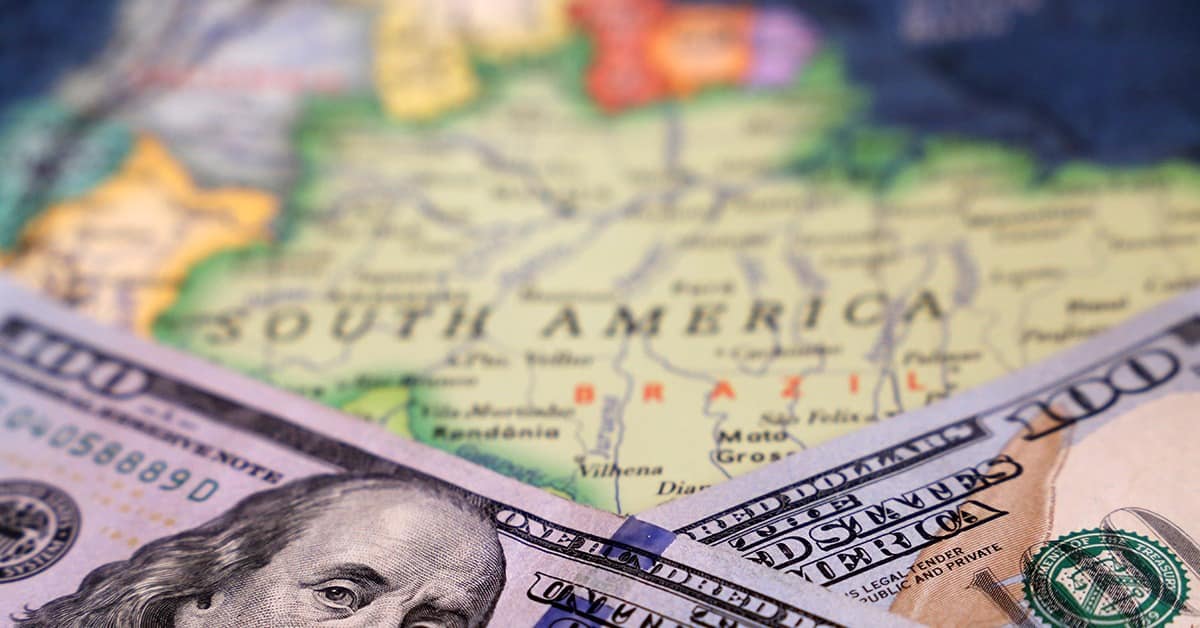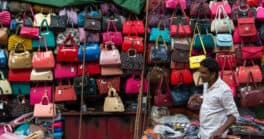Inflation and unemployment haven’t gone away entirely, but Latin America might just be inching towards a rebound.

The UN, through its Economic Commission for Latin America and the Caribbean (ECLAC), released new data regarding foreign direct investment (FDI) in July. Latin America attracted a record-breaking US$224.58 billion in 2022. For the first time since 2013, the region attracted more than US$200 billion in FDI.
But more recent data from individual central banks shows that the inflow of capitals might be slowing down, making the outlook uncertain.
Argentina has an upcoming election—and some of the candidates are not helping allay market concerns. Mexico and Colombia remain largely dependent on the US. And Brazil, still remains an open question mark for worldwide investors, as it reasserts its more traditional protaganist with Luiz Inácio Lula da Silva at the helm.
“There are positive developments in the region, despite the fact Latin America as a whole remains an outlier,” says. Paloma Lopes, an economist and investment advisor at Valor Investimentos, one of the top offices for Brazilian investment management powerhouse XP Inc.
Despite the record numbers, Latin America only captured 8% of last year’s total global foreign investment, putting it behind every other region in the globe. Just two countries managed to snag nearly two-thirds of the capital coming to the area: Brazil attracted 41% of that total (approximately US$92.1 billion) followed by Mexico, pulling 18% (approximately US$40.4 billion) of the regional share.
“Rightfully or not, Latin America suffers from lower levels of investor confidence based on its 20th-century history,” she adds.
According to Marcos Piellusch, finance professor at the Administration Institute Foundation arm of the University of São Paulo (FIA-USP), because Latin America relies heavily on exports to China, where the economy is slowing down, there is an increased perception of the risk associated with regional investment.
“In no way does this mean Latin exports to China will halt—the Chinese have ample appetite and need for commodity exports from Latin America,” Piellusch explains. “But we don’t know exactly how slower Chinese growth may negatively affect commerce on both sides.”
China is only one concern. In Europe, inflationary pressures persist, and interest rates are going up, slowing growth even further than previously forecast, and Germany now offically in a recession.
“The monetary policy in the US, on the other hand, makes it currently very attractive to investors both as a risk-aversion measure, as well as an opportunity for increased base-level earnings. That is the reason why it’s somewhat natural for capital to be flowing out of emerging markets in spite of a favorable outlook for Latin America,” Piellusch says.
And notwithstanding possible slow-downs, China is keeping its options open and forging ahead on its continued courtship of Latin America with heavy direct investment and wooing countries throughout the area with enticing preferential trade-deals. Sources at the Ministry of Foreign Affairs of Uruguay stated with no uncertain words in September that the country may forge ahead on a unilateral trade-deal with China even if this means exiting South America’s Mercosur trade bloc. According to a study by the Council on Foreign Relations (CFR), a New York-based think tank, China is already Latin America’s largest trading partner and has invested over US$73 billion in the region’s raw materials sector alone since the beginning of this century.
The country is also the largest partner and mastermind in the emerging-economies BRICS political grouping—along Brazil and India—and has pushed the group to announce an ambitious expansion at the end of August, which includes some odd-ducklings like Iran and Ethiopia, but also Argentina (at the behest of Brazil) and heavyweight Saudi Arabia.
Argentina: Breaking The Inflation Cycle, But At What Cost?
Argentina, one of the largest markets in the region, remains a major point of concern and an unknown in the greater Latin equation. “The economic crisis in Argentina is at staggering levels, with hyperinflation and an extremely high base interest-rate making life even more difficult for its impoverished population,” Lopes says.
According to her, “Argentina has entered a seemingly eternal loop where the economy keeps hurting its politics, but its politics keep harming the national economy.”
Adding to the uncertainties in the southernmost country in the western hemisphere are looming presidential elections on October 22nd, which are almost certain to require a second-round of voting.
Leading the polls is the extreme-right economist Javier Milei, who advocates “an anarchic form of capitalism in a fully dollarized economy” as the way to salvage the country.
Among other things, he also favors dropping the Mercosu (of which Argentina is a founding member along with Brazil, Paraguay, and Uruguay) precisely at a moment when the Southern Bloc is edging towards a free-trade agreement with the European Union (EU). Milei also says he does not plan to accept Brazil’s President Lula’s negotiated invitation for Argentina to join the BRICS.
If elected, Milei plans to pivot Argentina away from the Global South, focusing its economic efforts on “agreements and partnerships with the US and Israel.”
“It doesn’t bode well if he wins and follows through with his plans,” Piellusch argues. “The Argentinian economy, despite its state, is still very important for Latin America. Whatever happens there has repercussions throughout the region. Even though the population has lost significant purchasing power over the years, we are still talking about a market of 40 million potential consumers,” he adds.
For Tomaz Paoliello, professor and coordinator of the Pontifical Catholic University of São Paulo’s (PUC-SP) global governance and international policy formulation master’s program, Argentina has great potential to “make or break Latin America,” swaying regional trends either way.
“Argentina still is a highly developed and educated country and this creates significant opportunity. If the country remains a functioning partner of Mercosur and helps the bloc reach a trade deal with the EU, this can lead to a positive impact both throughout South America and in Europe. However, Argentina also currently carries an aura of “damaged goods,” which is unfavorable for the whole of South America. Brazil is making a real effort to include Argentina in international forums and to improve their neighbor’s image in investors’ eyes, because of the deep historical, economic, and political integration between the two nations.
“A recovered Argentina can significantly boost Latin America’s economy. However, if that doesn’t materialize, remaining at its current state may not be the absolute worst prospect for the country or the region, considering all the noise on the campaign trail regarding the option of a drastic break with established norms,” says Paoliello.
Opportunities On The Horizon
Structural factors continue to hamper local development.
Criminality and corruption continue to heavily plague almost every country in the region with important exceptions in Uruguay and Chile. In Ecuador, presidential candidate (and the runner-up in polls) Fernando Villavivencio was assassinated at a campaign event in early August—just 10 days before the first-round of voting.
“Criminality and corruption exact a heavy toll across the region,” Paoliello explains. “Investors need to factor bribery, heavy security, and a high rate of cargo theft into the cost of doing business in Latin America,” he says.
Chronic infrastructural problems affecting freight routes, roads, ports, waterways and railways are also common themes in large swathes of the hemisphere.
“Those issues could, however, easily turn into major opportunities for growth and investment, if there’s also a little bit of political will,” argues Paloma Lopes.
According to the economist, major infrastructure developments necessarily require large direct investment. “If the region is open to international partnerships this could translate into very large sums of FDI,” she explains.
Yet, for all the conditionals impeding a more assertive Latin American take-off, analysts agree the region presents great—and safer—opportunities when compared to other emerging areas.
“Latin America continues to be extremely safe when compared to other developing markets. Political stability, democracy, personal freedoms, and human development indicators are much more deeply rooted here than in Africa, the Middle East, and parts of Asia,” says Paoliello.
“From a financial standpoint, Latin America continues to be extremely attractive for FDI. You have large consumer markets, who are relatively well-educated, along with a sizable middle-class that is finally starting to receive government incentives after the Covid-19 hiatus, which concentrated government expenditure on the lower-income classes. There’s appetite for internal consumption and a young, dynamic, workforce available in the region. That is not something you find everywhere,” Lopes adds.



